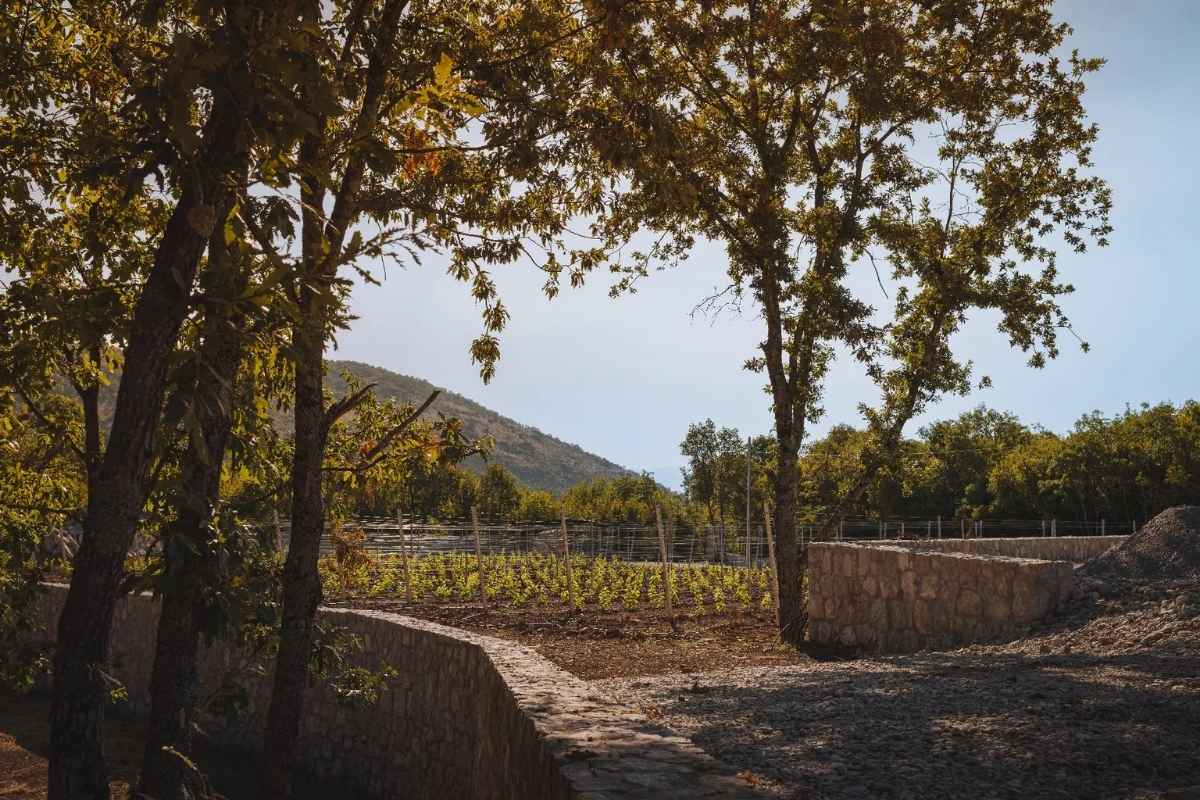Grape varieties of the Katun wine subregion
Vranac – the leading grape
The native Vranac dominates the Katun subregion, covering 14.69% of the vineyard area and an impressive 68.47% in mixed plantings. Known as Montenegro’s flagship variety, Vranac in Katun tends to express a slightly different character compared to lowland regions, often showing fresher acidity and elegant structure due to the cooler climate.
Other grape varieties
Besides Vranac, the subregion cultivates Kratošija (1.19%), another ancient Balkan variety, and Marselan (0.45%), a French crossing of Cabernet Sauvignon and Grenache that adapts well to diverse terroirs.
A mix of smaller plantings of local and international grapes also contributes to the region’s viticultural diversity, with potential for innovative blends and boutique-style wines.
Terroir and climate of the Katun wine subregion
The Katun subregion is situated in upland and mountainous zones, where elevations and exposure to winds create a cooler mesoclimate compared to the warmer plains around Lake Skadar. Predominantly limestone and karst offer excellent drainage and contribute to wines with minerality and structure.
With cooler nights and a slightly shorter growing season, the Katun subregion favours grapes that benefit from slower ripening, resulting in wines with balanced alcohol, vibrant acidity, and aromatic intensity.
These conditions make Katun particularly well-suited for white varieties and lighter reds, in addition to the dominant Vranac.
Tradition and potential of the Katun wine subregion
Historically, the Katun area has been associated with smallholder viticulture, where families produced wine primarily for local consumption. This heritage has preserved old vineyards and traditional practices, but it also means that large-scale commercial production remains limited.
Today, the Katun subregion is increasingly recognised as a promising zone for experimentation, especially with climate-resilient varieties and premium boutique wines. Its higher altitude and cooler climate position it as an attractive alternative to lowland regions, offering wines with freshness, elegance, and distinctive terroir-driven profiles.
Significance of Katun in Montenegrin winemaking
Although smaller in size and production compared to Crmnica or Podgorica, the Katun wine subregion contributes to the diversity of Montenegro’s wine landscape. For casual wine lovers, it offers authentic, characterful wines rooted in tradition. For professionals, Katun represents an exciting area for research, innovation, and the cultivation of varieties adapted to climate change.
The future of this subregion lies in combining heritage with innovation, ensuring that its wines continue to reflect the rugged beauty of the Montenegrin uplands while meeting the expectations of modern wine consumers.
5 wineries of the Katun wine subregion


